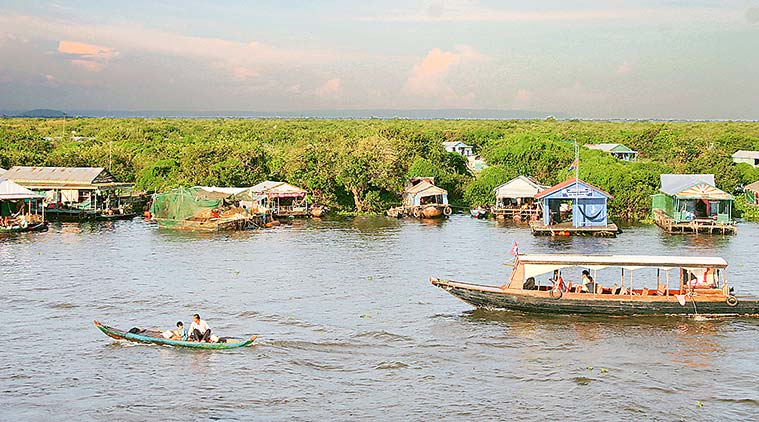Floating in a big blue, plastic bucket, with a long stick propelling her towards us, came a little girl asking for ‘dollars’. We were on a half-day cruise on Tonle Sap lake near Siem Reap, Cambodia, and were about to stop by at a floating crocodile farm for some refreshments, souvenirs and selfies. The girl had comfortably wrapped a snake around her body, which she seemed to have plucked out of the water.
According to our guide, the girl was from one of the floating villages on the lake, mostly inhabited by groups of people who were “neither Cambodian nor foreigners”. With more than 170 floating villages on Tonle Sap, most of the 80,000 people living here are considered non-immigrant foreigners, he explained.
In the ’70s, many Vietnamese living in Cambodia faced deportation after a change in regime. Stripped of all Cambodian identity documents, those who returned in the ’80s could neither reclaim nor buy land. Their solution was to live in wooden homes floating on the lake. So, their children don’t get birth certificates, they can’t attend public schools, own property, get regular jobs, or even open bank accounts. They subsist primarily on fishing and tourist dollars. That’s what had brought the little girl to us.




